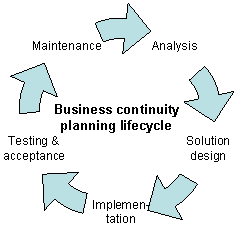
Computer security, cyber security, digital security or information technology security is the protection of computer systems and networks from attacks by malicious actors that may result in unauthorized information disclosure, theft of, or damage to hardware, software, or data, as well as from the disruption or misdirection of the services they provide.

Information security, sometimes shortened to InfoSec, is the practice of protecting information by mitigating information risks. It is part of information risk management. It typically involves preventing or reducing the probability of unauthorized or inappropriate access to data or the unlawful use, disclosure, disruption, deletion, corruption, modification, inspection, recording, or devaluation of information. It also involves actions intended to reduce the adverse impacts of such incidents. Protected information may take any form, e.g., electronic or physical, tangible, or intangible. Information security's primary focus is the balanced protection of data confidentiality, integrity, and availability while maintaining a focus on efficient policy implementation, all without hampering organization productivity. This is largely achieved through a structured risk management process that involves:

Risk management is the identification, evaluation, and prioritization of risks followed by coordinated and economical application of resources to minimize, monitor, and control the probability or impact of unfortunate events or to maximize the realization of opportunities.

Business continuity may be defined as "the capability of an organization to continue the delivery of products or services at pre-defined acceptable levels following a disruptive incident", and business continuity planning is the process of creating systems of prevention and recovery to deal with potential threats to a company. In addition to prevention, the goal is to enable ongoing operations before and during execution of disaster recovery. Business continuity is the intended outcome of proper execution of both business continuity planning and disaster recovery.
Disaster recovery is the process of maintaining or reestablishing vital infrastructure and systems following a natural or human-induced disaster, such as a storm or battle. It employs policies, tools, and procedures. Disaster recovery focuses on information technology (IT) or technology systems supporting critical business functions as opposed to business continuity. This involves keeping all essential aspects of a business functioning despite significant disruptive events; it can therefore be considered a subset of business continuity. Disaster recovery assumes that the primary site is not immediately recoverable and restores data and services to a secondary site.

The Federal Information Security Management Act of 2002 is a United States federal law enacted in 2002 as Title III of the E-Government Act of 2002. The act recognized the importance of information security to the economic and national security interests of the United States. The act requires each federal agency to develop, document, and implement an agency-wide program to provide information security for the information and information systems that support the operations and assets of the agency, including those provided or managed by another agency, contractor, or other source.

Information security standards or cyber security standards are techniques generally outlined in published materials that attempt to protect the cyber environment of a user or organization. This environment includes users themselves, networks, devices, all software, processes, information in storage or transit, applications, services, and systems that can be connected directly or indirectly to networks.

In the U.S., critical infrastructure protection (CIP) is a concept that relates to the preparedness and response to serious incidents that involve the critical infrastructure of a region or the nation. The American Presidential directive PDD-63 of May 1998 set up a national program of "Critical Infrastructure Protection". In 2014 the NIST Cybersecurity Framework was published after further presidential directives.

The Federal Office for Information Security is the German upper-level federal agency in charge of managing computer and communication security for the German government. Its areas of expertise and responsibility include the security of computer applications, critical infrastructure protection, Internet security, cryptography, counter eavesdropping, certification of security products and the accreditation of security test laboratories. It is located in Bonn and as of 2020 has about 1,100 employees. Its current president, since 1 February 2016, is former business executive Arne Schönbohm, who took over the presidency from Michael Hange.
A chief information security officer (CISO) is a senior-level executive within an organization responsible for establishing and maintaining the enterprise vision, strategy, and program to ensure information assets and technologies are adequately protected. The CISO directs staff in identifying, developing, implementing, and maintaining processes across the enterprise to reduce information and information technology (IT) risks. They respond to incidents, establish appropriate standards and controls, manage security technologies, and direct the establishment and implementation of policies and procedures. The CISO is also usually responsible for information-related compliance. The CISO is also responsible for protecting proprietary information and assets of the company, including the data of clients and consumers. CISO works with other executives to make sure the company is growing in a responsible and ethical manner.
Information assurance (IA) is the practice of assuring information and managing risks related to the use, processing, storage, and transmission of information. Information assurance includes protection of the integrity, availability, authenticity, non-repudiation and confidentiality of user data. IA encompasses both digital protections and physical techniques. These methods apply to data in transit, both physical and electronic forms, as well as data at rest. IA is best thought of as a superset of information security, and as the business outcome of information risk management.
Security controls are safeguards or countermeasures to avoid, detect, counteract, or minimize security risks to physical property, information, computer systems, or other assets. In the field of information security, such controls protect the confidentiality, integrity and availability of information.
Information technology risk, IT risk, IT-related risk, or cyber risk is any risk relating to information technology. While information has long been appreciated as a valuable and important asset, the rise of the knowledge economy and the Digital Revolution has led to organizations becoming increasingly dependent on information, information processing and especially IT. Various events or incidents that compromise IT in some way can therefore cause adverse impacts on the organization's business processes or mission, ranging from inconsequential to catastrophic in scale.
NIST Special Publication 800-53 is an information security standard that provides a catalog of security and privacy controls for all U.S. federal information systems except those related to national security. It is published by the National Institute of Standards and Technology, which is a non-regulatory agency of the United States Department of Commerce. NIST develops and issues standards, guidelines, and other publications to assist federal agencies in implementing the Federal Information Security Modernization Act of 2014 (FISMA) and to help with managing cost effective programs to protect their information and information systems.

Security information and event management (SIEM) is a field within the field of computer security, where software products and services combine security information management (SIM) and security event management (SEM). They provide real-time analysis of security alerts generated by applications and network hardware. Vendors sell SIEM as software, as appliances, or as managed services; these products are also used to log security data and generate reports for compliance purposes. The term and the initialism SIEM was coined by Mark Nicolett and Amrit Williams of Gartner in 2005.

Internet Security Awareness Training (ISAT) is the training given to members of an organization regarding the protection of various information assets of that organization. ISAT is a subset of general security awareness training (SAT).

IT risk management is the application of risk management methods to information technology in order to manage IT risk, i.e.:
Cyber threat intelligence (CTI) is knowledge, skills and experience-based information concerning the occurrence and assessment of both cyber and physical threats and threat actors that is intended to help mitigate potential attacks and harmful events occurring in cyberspace. Cyber threat intelligence sources include open source intelligence, social media intelligence, human Intelligence, technical intelligence, device log files, forensically acquired data or intelligence from the internet traffic and data derived for the deep and dark web.
NIST Cybersecurity Framework is a set of guidelines for mitigating organizational cybersecurity risks, published by the US National Institute of Standards and Technology (NIST) based on existing standards, guidelines, and practices. The framework "provides a high level taxonomy of cybersecurity outcomes and a methodology to assess and manage those outcomes", in addition to guidance on the protection of privacy and civil liberties in a cybersecurity context. It has been translated to many languages, and is used by several governments and a wide range of businesses and organizations.
Internet security awareness or Cyber security awareness refers to how much end-users know about the cyber security threats their networks face, the risks they introduce and mitigating security best practices to guide their behavior. End users are considered the weakest link and the primary vulnerability within a network. Since end-users are a major vulnerability, technical means to improve security are not enough. Organizations could also seek to reduce the risk of the human element. This could be accomplished by providing security best practice guidance for end users' awareness of cyber security. Employees could be taught about common threats and how to avoid or mitigate them.








